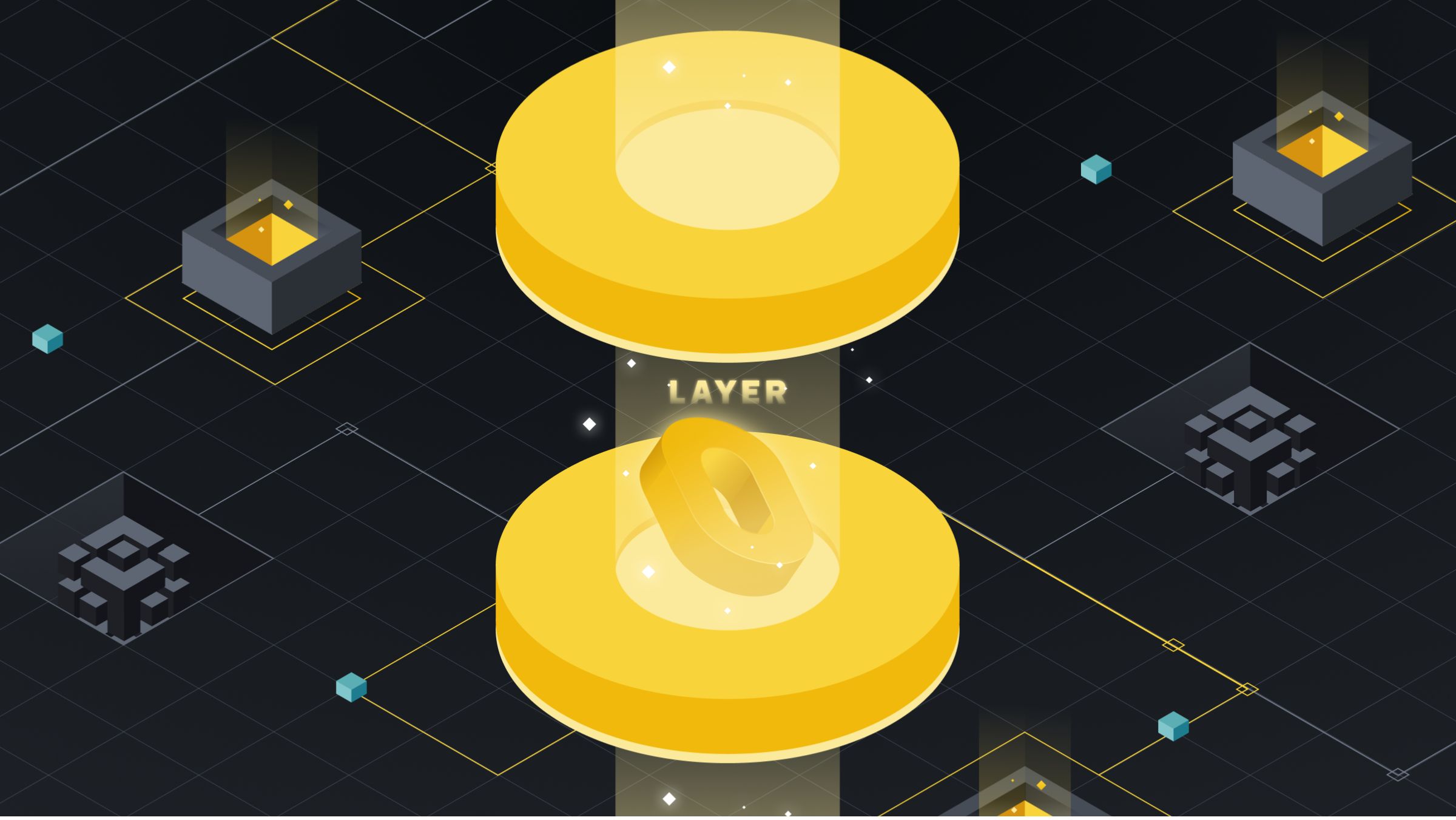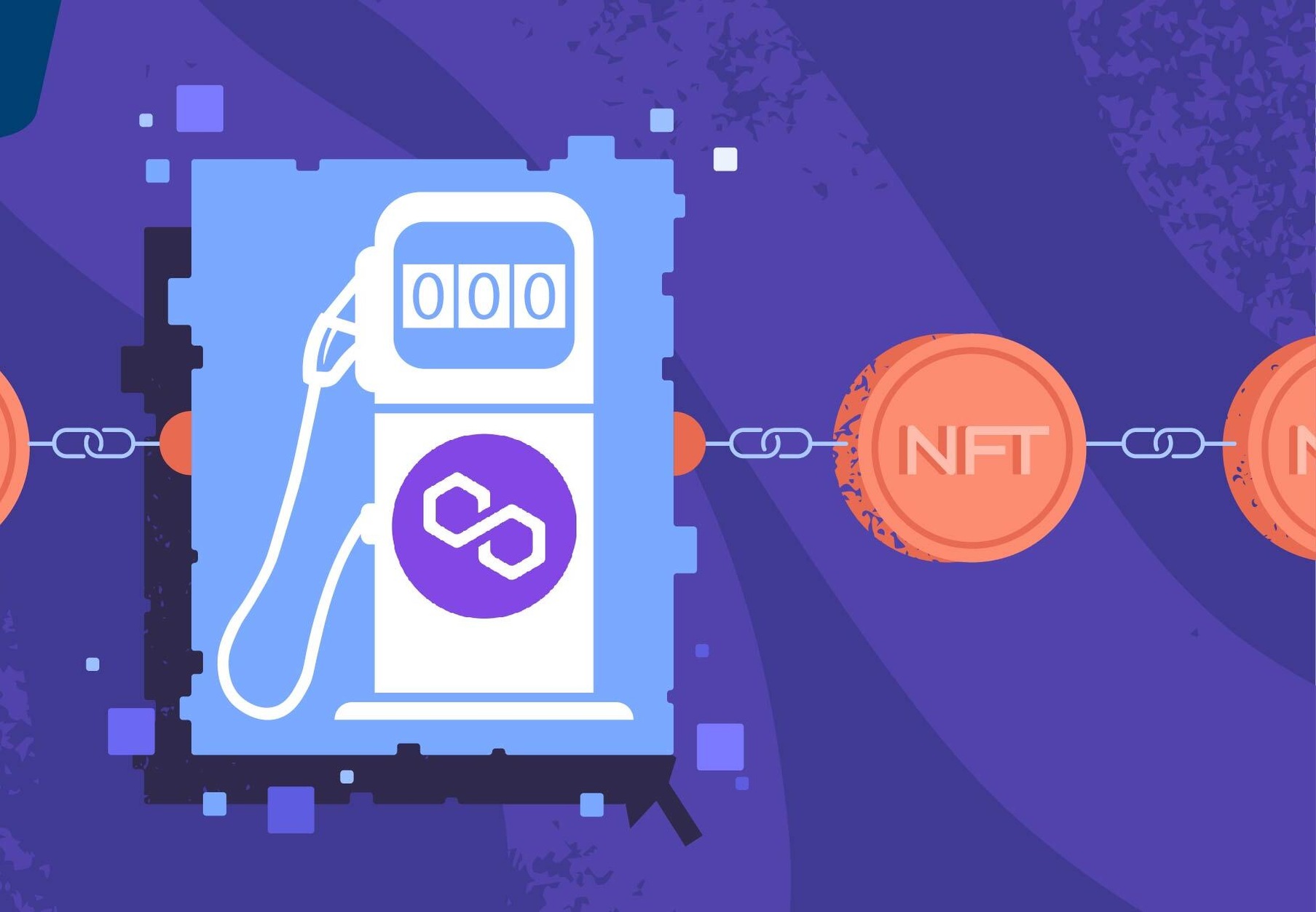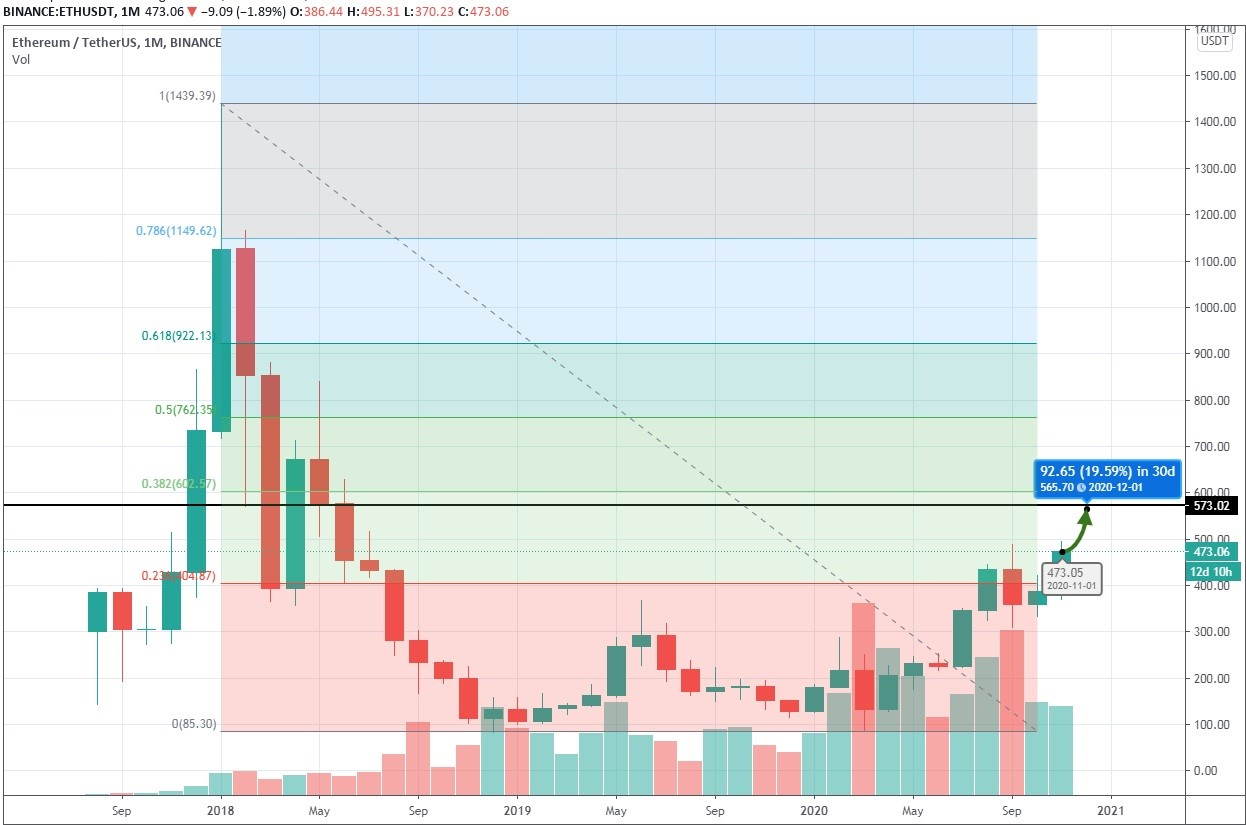Introduction
Welcome to the exciting world of blockchain technology! Over the past decade, the blockchain has emerged as a revolutionary technology with the potential to transform various industries. It has gained immense popularity for its ability to provide secure, transparent, and decentralized transactions.
As the adoption of blockchain continues to grow, so does the need for more scalable and efficient solutions. This has led to the development of various layers in the blockchain architecture, each targeting specific challenges and providing unique functionalities. One such layer that has gained significant attention is the Layer 0 blockchain.
Layer 0 blockchain is a term used to describe the underlying infrastructure that supports the entire blockchain network. It focuses on improving the fundamental components of the blockchain, including consensus algorithms, networking protocols, and data structures. By optimizing these fundamental layers, Layer 0 blockchain aims to enhance the overall performance, scalability, and security of the entire system.
One of the key motivations behind the development of Layer 0 blockchain is the need to address the limitations of the existing blockchain solutions. Traditional blockchains, such as Bitcoin and Ethereum, face challenges like scalability, slow transaction processing times, and high energy consumption. Layer 0 blockchain attempts to tackle these issues by introducing innovative mechanisms and protocols that enable higher transaction throughput, lower latency, and reduced energy consumption.
Moreover, Layer 0 blockchain offers greater flexibility and extensibility to the entire blockchain ecosystem. It allows for the seamless integration of different consensus algorithms, enabling developers to choose the most suitable algorithm for their specific use case. This flexibility also facilitates the upgrade and evolution of the blockchain network without disrupting the existing infrastructure.
In this article, we will explore the key features, benefits, use cases, and challenges of Layer 0 blockchain. We will also compare it with other layer solutions in the blockchain architecture. By the end of this article, you will have a solid understanding of Layer 0 blockchain and its potential to revolutionize the blockchain industry.
Definition of Layer 0 Blockchain
Layer 0 blockchain refers to the foundational layer of the blockchain architecture that focuses on improving the underlying infrastructure of the blockchain network. It aims to enhance the fundamental components such as consensus algorithms, networking protocols, and data structures to achieve higher performance, scalability, and security.
At this layer, the emphasis is on optimizing the core functionalities of the blockchain network rather than adding additional layers or protocols. By addressing the limitations of traditional blockchains, Layer 0 blockchain enables faster transaction processing, increased transaction throughput, improved network scalability, and reduced energy consumption.
One of the key aspects of Layer 0 blockchain is the enhancement of consensus algorithms. Consensus algorithms play a crucial role in achieving consensus among network participants and validating transactions. Layer 0 blockchain introduces innovative consensus mechanisms that enable faster and more efficient consensus, reducing the time required to validate transactions and add them to the blockchain.
Another important feature of Layer 0 blockchain is the optimization of networking protocols. Efficient networking is essential for seamless communication and data transmission within the blockchain network. Layer 0 blockchain improves networking protocols to reduce latency, increase bandwidth, and enhance the overall network performance.
Layer 0 blockchain also focuses on optimizing data structures used in the blockchain. By employing advanced data structures, Layer 0 blockchain achieves efficient storage, retrieval, and verification of data. This leads to faster transaction processing and improved overall system performance.
It is important to note that Layer 0 blockchain does not add additional layers or protocols to the existing blockchain architecture. Instead, it enhances the underlying infrastructure to create a more robust and scalable blockchain network. This makes Layer 0 blockchain a critical component in improving the performance and scalability of the entire blockchain ecosystem.
In summary, Layer 0 blockchain refers to the foundational layer of the blockchain architecture that focuses on optimizing the core components of the blockchain network. It improves consensus algorithms, networking protocols, and data structures to achieve higher performance, scalability, and security. By enhancing the underlying infrastructure, Layer 0 blockchain plays a crucial role in revolutionizing the blockchain industry and addressing the limitations of traditional blockchain solutions.
Key Features of Layer 0 Blockchain
Layer 0 blockchain offers several key features that contribute to its ability to enhance the performance, scalability, and security of the blockchain network. These features distinguish Layer 0 blockchain from other blockchain layers and traditional blockchains. Let’s explore some of the key features of Layer 0 blockchain:
- Optimized Consensus Algorithms: One of the primary features of Layer 0 blockchain is the optimization of consensus algorithms. Layer 0 blockchain introduces innovative consensus mechanisms that aim to achieve faster consensus among network participants. These algorithms reduce the time required to validate transactions, resulting in faster transaction processing and increased transaction throughput.
- Enhanced Networking Protocols: Layer 0 blockchain focuses on improving networking protocols to optimize communication and data transmission within the blockchain network. By enhancing the networking protocols, Layer 0 blockchain reduces latency, increases bandwidth, and improves overall network performance. This enables faster and more efficient data transfer, contributing to a more scalable blockchain network.
- Advanced Data Structures: Layer 0 blockchain utilizes advanced data structures for efficient storage, retrieval, and verification of data. These optimized data structures enable faster transaction processing and enhance the overall system performance. By leveraging innovative data structures, Layer 0 blockchain improves the scalability and efficiency of the blockchain network.
- Flexibility and Extensibility: Layer 0 blockchain offers greater flexibility and extensibility to the entire blockchain ecosystem. It allows for the seamless integration of different consensus algorithms and protocols, enabling developers to choose the most suitable options for their specific use case. This flexibility facilitates the upgrade and evolution of the blockchain network without disrupting the existing infrastructure.
- Improved Security: Layer 0 blockchain enhances the security of the blockchain network by implementing robust security mechanisms. It focuses on strengthening the underlying infrastructure to protect against various attacks and vulnerabilities. By enhancing security at the fundamental layers, Layer 0 blockchain provides a more secure foundation for the blockchain ecosystem.
These are just a few of the key features of Layer 0 blockchain. It is important to note that the specific features may vary depending on the implementation and the objectives of the Layer 0 blockchain solution. Nonetheless, these features collectively contribute to the enhanced performance, scalability, and security of the blockchain network.
Benefits of Layer 0 Blockchain
Layer 0 blockchain offers a multitude of benefits that make it a promising solution for improving the performance, scalability, and security of the blockchain network. These benefits can have a significant impact on various industries and use cases. Let’s delve into some of the key advantages of Layer 0 blockchain:
- Improved Scalability: Layer 0 blockchain addresses one of the major challenges of traditional blockchains, which is scalability. By optimizing the core components of the blockchain network, Layer 0 blockchain enables higher transaction throughput and faster transaction processing times. This scalability improvement allows the network to handle a larger volume of transactions, making it more suitable for enterprise-level applications.
- Enhanced Performance: The optimization of consensus algorithms, networking protocols, and data structures in Layer 0 blockchain leads to improved overall system performance. Transactions can be processed faster, reducing the time required for transaction confirmation. Additionally, the enhanced networking protocols enable faster data transfer and better network latency, resulting in a smoother and more responsive user experience.
- Reduced Energy Consumption: Traditional blockchains, particularly those that use Proof-of-Work consensus algorithms, are known for their high energy consumption. Layer 0 blockchain introduces more energy-efficient consensus mechanisms and optimizations that contribute to reduced energy consumption. This can have positive environmental implications and make blockchain technology more sustainable.
- Greater Flexibility and Customizability: Layer 0 blockchain allows for the integration of different consensus algorithms and protocols, giving developers the freedom to customize and tailor the blockchain network to their specific requirements. This flexibility enables the adoption of blockchain technology across a wide range of industries and use cases, accommodating diverse needs and preferences.
- Enhanced Security: By focusing on the optimization of the underlying infrastructure, Layer 0 blockchain strengthens the security of the entire blockchain network. It introduces robust security mechanisms and protocols to protect against various vulnerabilities and attacks. This enhanced security helps to build trust among participants and safeguards sensitive data and transactions.
These benefits make Layer 0 blockchain a compelling choice for organizations and developers looking to leverage blockchain technology for their applications. The improved scalability, performance, energy efficiency, flexibility, and security provided by Layer 0 blockchain can drive innovation and unlock new possibilities in various industries, such as finance, supply chain management, healthcare, and more.
Comparison with Other Layer Solutions
In the blockchain architecture, there are multiple layers that aim to address different challenges and provide specific functionalities. While Layer 0 blockchain focuses on optimizing the underlying infrastructure, other layers, such as Layer 1 and Layer 2, contribute to different aspects of blockchain scalability and functionality. Let’s compare Layer 0 blockchain with other layer solutions:
- Layer 1 Blockchain: Layer 1 blockchain refers to the base layer of the blockchain architecture, where the main transaction processing and consensus mechanisms take place. Unlike Layer 0 blockchain, which focuses on optimizing the underlying infrastructure, Layer 1 blockchain typically focuses on improving consensus algorithms to achieve security, decentralization, and trust. Layer 0 blockchain enhances Layer 1 blockchain by improving performance, scalability, and energy efficiency at the core level, making it a more efficient and scalable solution.
- Layer 2 Blockchain: Layer 2 blockchain solutions are designed to build on top of Layer 1 blockchains to address scalability and throughput limitations. These solutions, such as payment channels and sidechains, enable off-chain transactions and reduce the burden on the Layer 1 blockchain. While Layer 2 solutions provide scalability benefits, they may introduce additional complexities, such as the need for additional trust assumptions or trade-offs in decentralization. Layer 0 blockchain complements Layer 2 solutions by optimizing the underlying infrastructure, making the entire system more scalable, efficient, and secure.
- Layer 3 and Beyond: Beyond Layer 2, there can be additional layers in the blockchain architecture, each providing specific functionalities and addressing specific use cases. These layers may include features like privacy, interoperability, governance, or specialized smart contract capabilities. Layer 0 blockchain serves as the foundational layer that supports these higher layers, ensuring a robust and efficient infrastructure for the entire stack.
It is important to note that the different layers in the blockchain architecture are not mutually exclusive but rather work in harmony to achieve a more efficient and scalable blockchain network. Layer 0 blockchain, as the foundational layer, focuses on optimizing the core components to enhance overall performance, scalability, energy efficiency, and security. By doing so, it complements other layer solutions, enabling a more holistic and comprehensive blockchain ecosystem.
In summary, while Layer 1 blockchain focuses on consensus algorithms and Layer 2 solutions address scalability through off-chain transactions, Layer 0 blockchain enhances the performance and scalability of the entire blockchain network by optimizing the underlying infrastructure. Together with other layer solutions, Layer 0 blockchain plays a crucial role in the overall advancement and evolution of blockchain technology.
Use Cases of Layer 0 Blockchain
Layer 0 blockchain offers a wide range of applications across various industries, leveraging its key features of improved scalability, performance, energy efficiency, flexibility, and security. Let’s explore some of the prominent use cases where Layer 0 blockchain can make a significant impact:
- Financial Services: Layer 0 blockchain can revolutionize the financial industry by enabling faster transaction processing, lower transaction fees, and improved security. It can be used for real-time settlement systems, cross-border payments, remittances, and decentralized finance (DeFi) applications, providing efficient and secure financial services to billions of people worldwide.
- Supply Chain Management: With its enhanced scalability and security, Layer 0 blockchain can improve transparency and traceability in supply chains. It can be used to track and verify the origin, movements, and authenticity of goods, reducing fraud, counterfeiting, and ensuring ethical sourcing. In addition, Layer 0 blockchain can streamline logistics, eliminate paperwork, and enable efficient supply chain financing.
- Healthcare: Layer 0 blockchain can enhance the security and privacy of sensitive healthcare data, enabling secure patient record management, interoperability, and consent-based data sharing. It can improve the integrity and transparency of medical records, facilitate secure telemedicine solutions, and enable efficient healthcare payment systems.
- Internet of Things (IoT): Layer 0 blockchain can provide a secure and scalable infrastructure for IoT devices. It can ensure trust, verify device identity, and enable secure communication between IoT devices. Layer 0 blockchain can also facilitate automated device-to-device transactions, such as machine-to-machine payments or smart energy grids, eliminating the need for intermediaries.
- Identity Management: Layer 0 blockchain can enhance identity management systems by providing secure, decentralized, and tamper-proof identity verification. It can enable self-sovereign identity, where individuals have full control over their personal data and can selectively share it with trusted entities, reducing the risk of identity theft and fraud.
These are just a few examples of the potential use cases for Layer 0 blockchain. The versatility and flexibility of Layer 0 blockchain make it applicable to almost any industry that requires enhanced performance, scalability, security, and efficiency. As blockchain technology continues to evolve, Layer 0 blockchain will play a pivotal role in enabling innovative solutions and transforming traditional industries.
Challenges and Limitations of Layer 0 Blockchain
While Layer 0 blockchain offers numerous benefits and potential use cases, it also faces certain challenges and limitations. These factors should be taken into consideration when implementing Layer 0 blockchain solutions. Let’s explore some of the challenges and limitations of Layer 0 blockchain:
- Complexity: Layer 0 blockchain solutions can be complex to design, implement, and maintain. Optimizing the underlying infrastructure requires deep technical expertise and a thorough understanding of the blockchain ecosystem. The complexity of Layer 0 blockchain can also make it challenging for developers to integrate and upgrade the existing blockchain networks.
- Adoption and Compatibility: Introducing Layer 0 blockchain requires widespread adoption and compatibility among different blockchain networks. Ensuring interoperability and consensus among various stakeholders can be a significant challenge. Additionally, migrating existing systems to Layer 0 blockchain may pose compatibility issues and require careful planning and coordination.
- Security Risks: While Layer 0 blockchain aims to enhance security, it is not immune to vulnerabilities and attacks. Introducing new consensus algorithms and protocols may introduce unknown security risks. It is crucial to thoroughly evaluate and test the security mechanisms of Layer 0 blockchain solutions to ensure robustness and protect against potential threats.
- Cost and Resources: Implementing Layer 0 blockchain solutions can involve significant costs and resource allocation. Upgrading the underlying infrastructure and integrating new technologies might require substantial investments in hardware, software, and expertise. Additionally, Layer 0 blockchain solutions may require ongoing maintenance and updates, which can add to the overall cost of adoption.
- Ecosystem Fragmentation: The emergence of different Layer 0 blockchain solutions can lead to ecosystem fragmentation within the blockchain industry. Each solution may have its own set of protocols, consensus algorithms, and interoperability standards. This fragmentation can hinder collaboration and compatibility between different blockchain networks, potentially limiting the scalability and adoption of Layer 0 blockchain in the broader ecosystem.
It is important to address these challenges and limitations to ensure the successful implementation and adoption of Layer 0 blockchain solutions. Collaboration among stakeholders, thorough evaluation of security measures, and careful planning of integration and migration strategies are key to mitigating these challenges and maximizing the potential of Layer 0 blockchain.
Despite these challenges, Layer 0 blockchain continues to hold immense promise for improving the scalability, performance, and security of the blockchain network. By addressing these limitations through research, development, and collaboration, Layer 0 blockchain can unlock new possibilities and further advance the blockchain industry.
Conclusion
Layer 0 blockchain, as the foundational layer of the blockchain architecture, plays a crucial role in improving the performance, scalability, and security of the entire blockchain network. By optimizing the core components, including consensus algorithms, networking protocols, and data structures, Layer 0 blockchain offers numerous benefits and opens up a wide range of possibilities across various industries.
The key features of Layer 0 blockchain, such as optimized consensus algorithms, enhanced networking protocols, advanced data structures, flexibility, and security, contribute to its potential use cases in financial services, supply chain management, healthcare, IoT, and identity management, among others.
However, Layer 0 blockchain also faces challenges and limitations, such as complexity, adoption and compatibility, security risks, cost and resource requirements, and ecosystem fragmentation. It is essential to address these challenges and work towards collaborative solutions to ensure successful implementation and widespread adoption of Layer 0 blockchain.
Despite these challenges, Layer 0 blockchain continues to drive innovation and advancement in the blockchain industry. As more research and development efforts are dedicated to optimizing the underlying infrastructure, Layer 0 blockchain will pave the way for a more scalable, efficient, and secure blockchain ecosystem.
With the potential to revolutionize various industries and unlock new possibilities, Layer 0 blockchain holds immense promise for the future. By embracing this technology and addressing its challenges, we can create a more inclusive, transparent, and decentralized digital world.

























